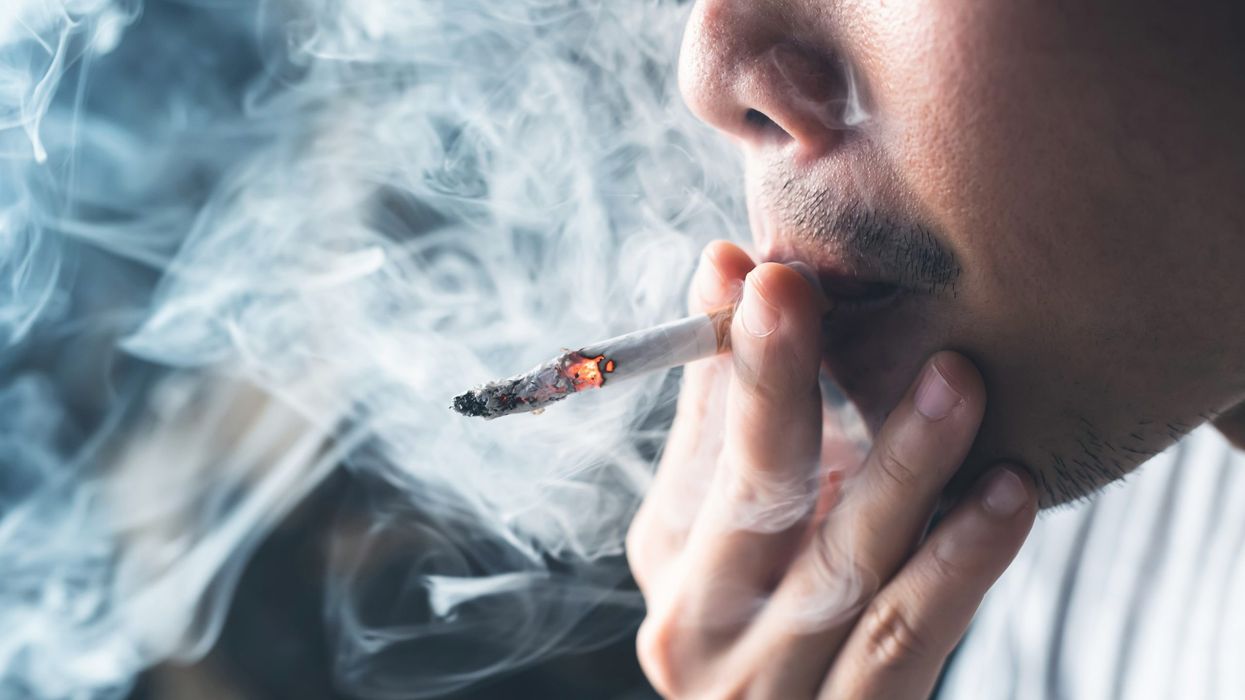According to American Nonsmokers’ Rights Foundation (ANRF) since the year 2002, studies have contributed to the growing body of evidence that lingering tobacco residue has significant health risks.
Secondhand smoking (when exhaled fumes from the end of a cigarette is breathed in by someone else who is not smoking) is known to be dangerous for decades now, but scientists are currently warning about thirdhand smoke – which has emerged as a new threat.
The term thirdhand smoke (THS) is used to describe the residual contamination from tobacco smoke that lingers in rooms long after smoking stops and which remains on our clothes even after we leave a place where smoking occurs.
A latest study by the US Government researchers at the Berkeley Lab in California has found that even just handling a cigarette smoker's clothing can expose people to dangerous levels of cancer-causing chemicals.
Tobacco smoke is composed of numerous types of gasses and particulate matter – these include carcinogens and heavy metals, like arsenic, lead, and cyanide informs the ANRF.
The sticky particulates that are highly toxic, like nicotine, can cling to walls and ceilings. Additionally, the gases can be absorbed into dust in a room, the draperies, carpets and other fabrics or upholsteries.
The Daily Mail states that the Government-run Berkeley Lab in California team is reported to have first identified how smoking leaves microscopic toxic chemicals on surfaces in 2010.
But for the first time, they have shown the 'potential health impacts of thirdhand smoke.' The study is published in the journal called Environmental Science and Technology.
In an earlier report that featured in Scientific America, Jonathan Winickoff, a pediatrician at the Dana–Farber/Harvard Cancer Center in Boston and author of a study on the new phenomenon published in the journal Pediatrics is quoted as saying, "Third-hand smoke is tobacco smoke contamination that remains after the cigarette has been extinguished."
In one study, researchers asked three volunteers (who did not smoke) to wear the clothes of a person who smokes heavily, for a stretch of three hours.
It was found that after the experiment, the volunteers showed up to 86 times higher levels of toxic compounds known as NNK and NNN (classified as human carcinogens or cancer-causing substances) in their urine.
Speaking about this phenomenon, lead author Dr Xiaochen Tang, a researcher at the Berkeley Lab, told the Daily Mail, “Nicotine is released in large amounts during smoking, and it coats all indoor surfaces, including human skin.”
In another study, researchers supposedly exposed these same carcinogens to human lung tissue - it was discovered that they can cause DNA damage which is one of the triggers of cancer, the Daily Mail states.
According to a US Surgeon General report in 2006, secondhand smoking is thought to increase the risk of lung cancer in those who don’t smoke by 20 to 30 per cent.
Speaking to Scientific America in a report that featured in 2009, Stanton Glantz, director of the Center for Tobacco Control Research and Education at the University of California, San Francisco is reported to have said, "The thirdhand smoke idea—concern over that—has been around for a long time. It's only recently been given a name and studied.
The level of toxicity in cigarette smoke is just astronomical when compared to other environmental toxins [such as particles found in automobile exhaust]."
In another experiment, mice were exposed to doses of NNK and NNN (carcinogens found in tobacco) on their skin. Researchers found high levels of both the chemicals in their urine, suggesting that skin contact can lead to these compounds getting into the body.
Even after the mice were not exposed to the chemicals, the chemicals continued to accumulate in their bodies for another week, the Daily Mail states.
Researchers also reportedly measured the levels of NNK and NNN in the air of 37 smokers' homes and 19 nonsmoker homes.
It was found that while the levels were reportedly negligible in non-smokers homes, the smokers' homes had more than the “no-significant risk levels” that is set out by California’s Office of Environmental Health Hazard Assessment.
“These findings illustrate the potential health impacts of thirdhand smoke, which contains not only TSNAs but hundreds of other chemicals, some of which are also known carcinogens,” states author Professor Neal Benowitz, a medic at University of California, San Francisco.
Tobacco-specific nitrosamines (TSNAs) are dangerous carcinogens created by tobacco.












